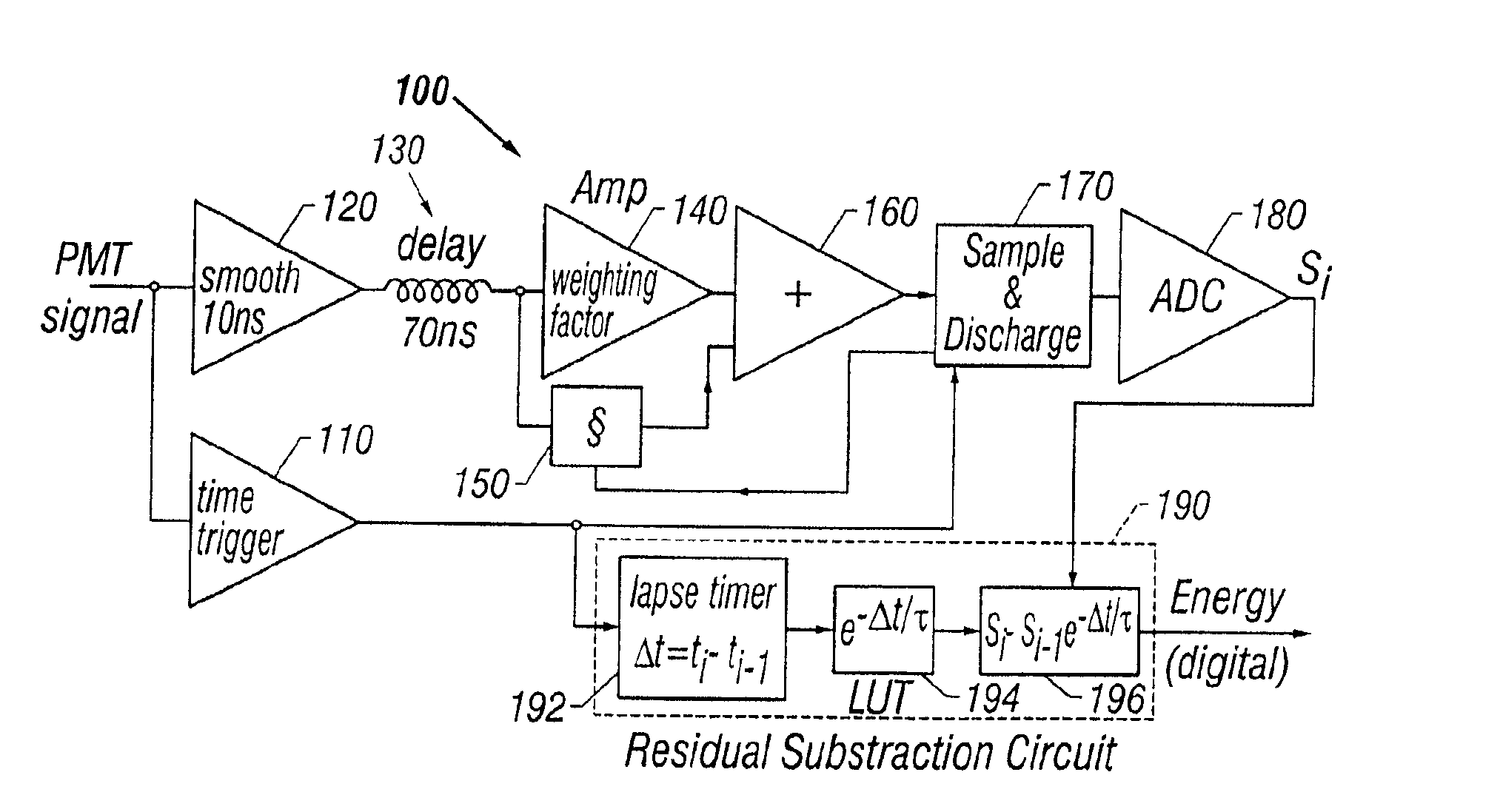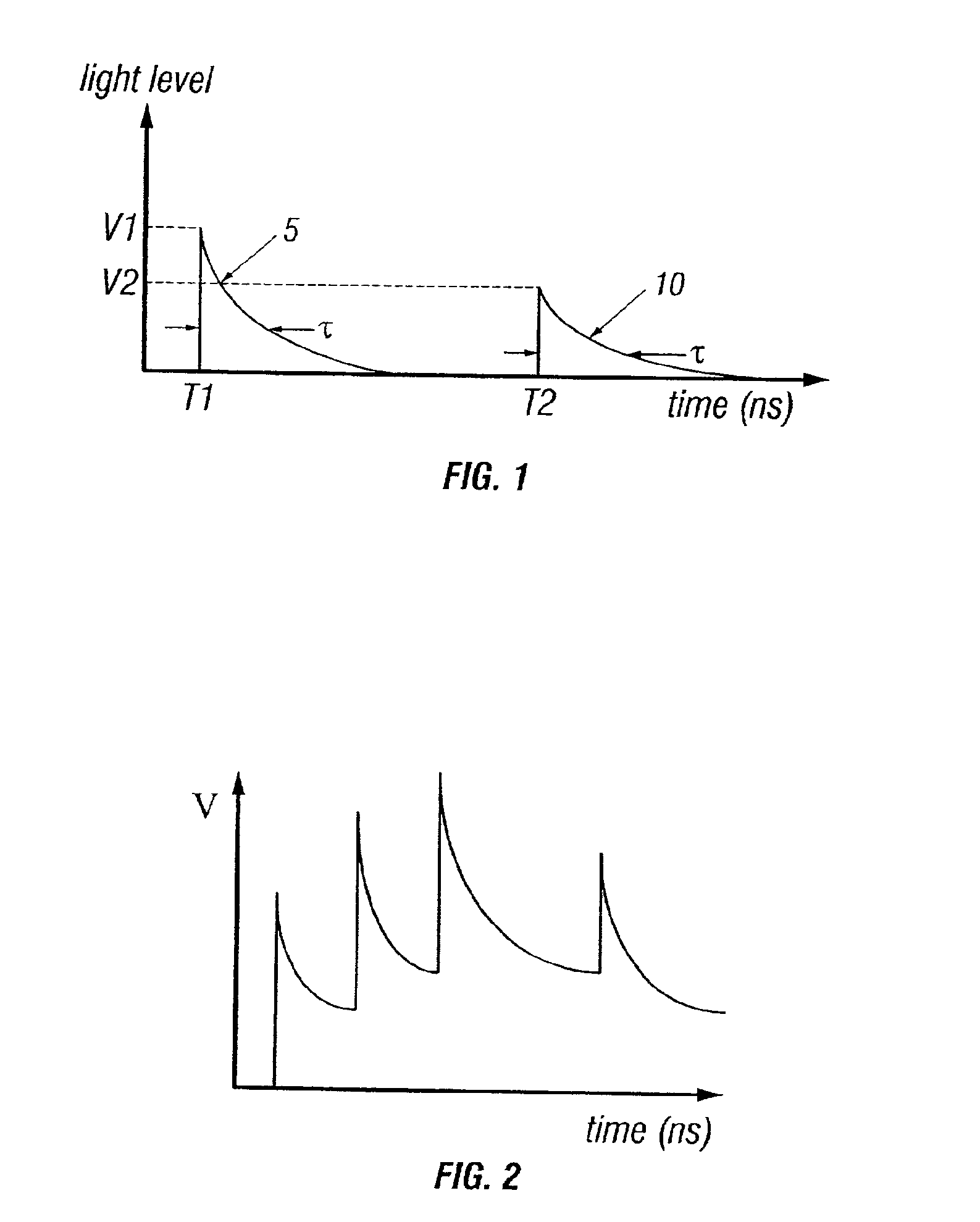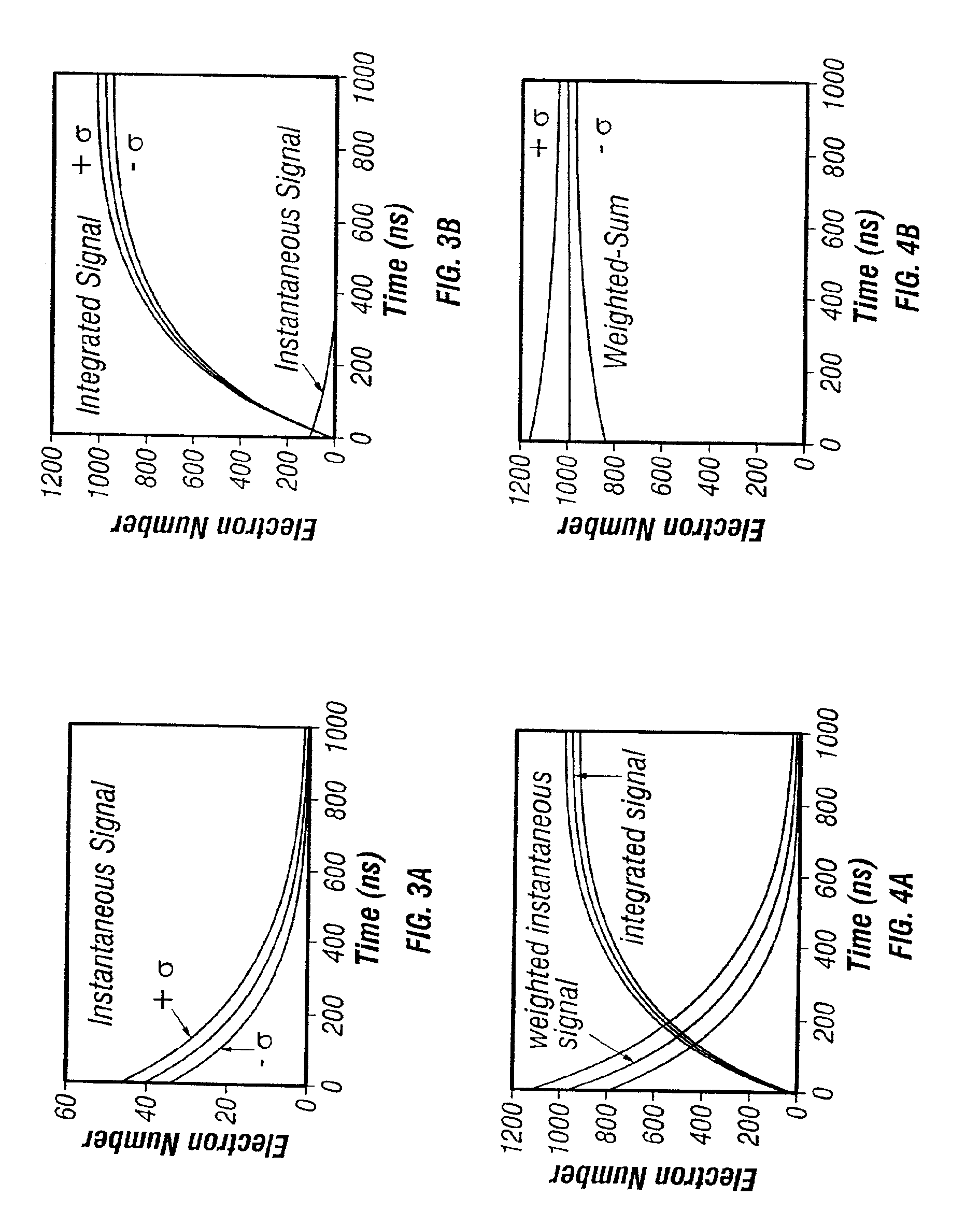Method and apparatus to prevent signal pile-up
a signal pile and apparatus technology, applied in the field of radiation detection and imaging technology, can solve the problems of affecting the detection system, affecting the detection accuracy of x-rays, etc., and achieves the effects of improving the count-rate capability and dose efficiency of gamma cameras, good timing-resolution, and small dead tim
- Summary
- Abstract
- Description
- Claims
- Application Information
AI Technical Summary
Benefits of technology
Problems solved by technology
Method used
Image
Examples
working examples
[0210]In studies with an exemplary embodiment, the present invention was used in connection with a 3″×4″ NaI(T1) scintillator with a photomultiplier from Ortec Corporation (Oak Ridge, Tenn.). This detector was connected to (1) regular detector electronics setup using a pulse-shaping amplifier (0.5 μs shaping time) and a multi-channel analyzer, and (2) to the pile-up prevention circuit (“PPC”) of the present invention.
[0211]The circuit may be interfaced to a computer. For example, the present invention was connected to a PC computer with a 133 MHz PENTIUM processor and a high-speed input / output board for the studies. The data acquisition software was written with LABVIEW (National Instruments, Austin, Tex.). A 99mTc point source (140 KeV gamma ray) in air was used for all the count-rate studies. The pile-up-prevention circuit of the present invention may also be used to measure the number of nonpile-ups, single pile-ups, and multiple pile-ups.
[0212]For comparison studies, circuits im...
example i
[0213]The pulse height spectra of 99mTc (140 KeV gamma-ray) for the pile-up prevention circuit of the present invention and the pulse-shaping method (500 ns) are shown in FIGS. 12A and 12B. FIG. 12A show results of the pulse-shaping method, and FIG. 12B show results of the present invention. At 50 Kcps, both measured 10.9% energy resolution. At 120 Kcps, the pulse-shaping method (FIG. 12A) started to demonstrate pile-up at the higher energy side and distortion at the lower energy side. Above 200-300 Kcps, the spectra were not usable. The PPC method spectra (FIG. 12B) maintained the spectra shape even at 2 Mcps. This first study demonstrated that the method of the present invention can significantly extend scintillation counting rates. However, the energy resolution was poor at 2 Mcps for this first study. Part of the reason was due to DC-level instabilities because the resistor divider of the photomultiplier (PMT) in the ORTEC probe was AC-coupled and the biasing-current was not des...
example ii
[0214]In a second study, the method of the present invention was compared with a delay-line clipping (DLC) experimental setup (using NIM electronic modules and a 256 ns clipping). The energy resolution results are shown in FIG. 14. At lower count rates, the PPC method had better resolution than the DLC method, while at 2 Mcps the energy resolution was about the same. The study also generated the photopeak-count rates, .i.e. the non-pile-up good counts acquired by each method using a narrow energy window, as a function of true-count rates, as shown in FIG. 15. For the method of the present invention at 2 Mcps, the photopeak counts were 85% of the total incident counts, while the DLC had only 25% good counts. The low photopeak fraction in the DLC method was due to a high 75% count-loss due to pile-ups which placed the pile-up-event energy above the photopeak acceptance-window. The DLC method delayed the occurrence of pile-up due to its shorter pulse width, but at very high count rates...
PUM
 Login to View More
Login to View More Abstract
Description
Claims
Application Information
 Login to View More
Login to View More - R&D
- Intellectual Property
- Life Sciences
- Materials
- Tech Scout
- Unparalleled Data Quality
- Higher Quality Content
- 60% Fewer Hallucinations
Browse by: Latest US Patents, China's latest patents, Technical Efficacy Thesaurus, Application Domain, Technology Topic, Popular Technical Reports.
© 2025 PatSnap. All rights reserved.Legal|Privacy policy|Modern Slavery Act Transparency Statement|Sitemap|About US| Contact US: help@patsnap.com



